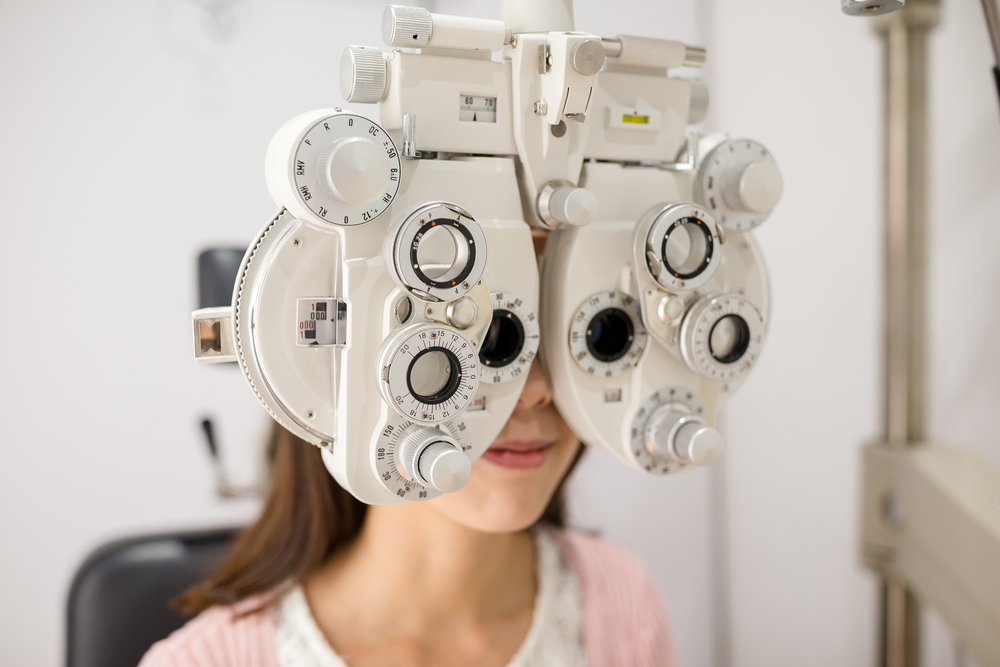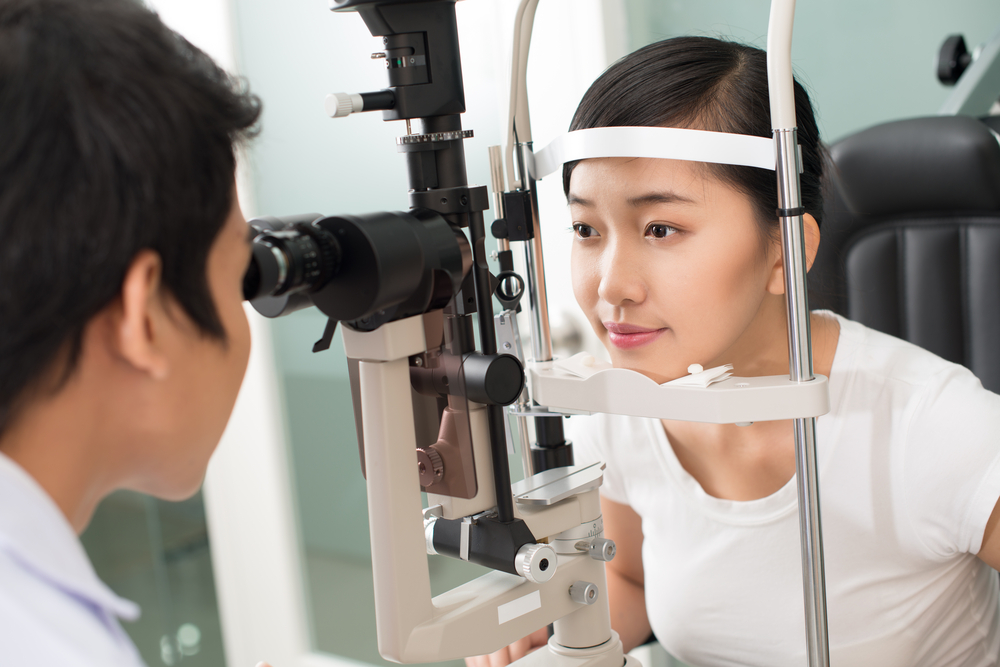What Goes On During A Contact Lens Eye Examination?
Share
Thinking of switching to contact lenses, but don't know what to expect? Before you buy contact lenses in stores or online, the first thing that you'll have to do is to get an eye exam. This includes the typical eye chart reading and the refraction tests, both of which you might already have experienced. Unlike a typical eye test, tests for contact lenses require more steps, such as a slit-lamp exam and a tear film evaluation. In this article, we will go through the steps of an eye exam in Singapore and hopefully lay any anxieties or fears you have to rest!
1. Eye Chart Reading
The quintessential "eye test" or reading chart test is something we are all familiar with, whether it be from health check-ups in school or in various media. This step is fairly straightforward — the specialist will ask you to read the smallest line of letters that you're able to see. This gives the specialist a gauge as to what your prescription might be.
2. Refraction Tests to Determine Your Prescription

A retinoscopy is usually performed early during the eye test, which allows the specialist to estimate your prescription for your contact lenses. You might have seen the machine they use for this at the optometrists' — the specialist will sit you down on one side and themselves on the other. The device then measures and determines the refractive errors in your eye (whether you are farsighted, nearsighted, or have astigmatism). The measurement is then translated into a prescription.
3. Slit-Lamp Exam
The slit lamp is a microscope that magnifies and illuminates the front of your eye with an intense line of light. The specialist can check both for the overall health of your eyes as it allows them to check each individual structure of your eye. It also helps them check how well the contact lenses fit — the magnification provides the specialist with a clear view of the alignment of the lens on your cornea.
4. Tear Film Evaluation
Your tear film is a deciding factor in your ability to successfully wear contact lenses. A small strip of special paper is placed underneath your lower eyelid. You then close your eyes for about five minutes, and the paper is removed. Specialists will measure the length of paper that has been moistened by your tears and your tear production.
Alternatively, they might drop some fluorescein dye and measure the amount of time it takes for your tears to evaporate. This test is crucial, as if you have severe dry eye syndrome, you might be advised to avoid contact lenses. However, a mild case of dry eyes can be worked around, as there are contact lenses designed specially for those with drier eyes.
5. Consultation & Measurement for Lens Fitting

This is another crucial step in creating a pair of contact lenses that fit you well and ensure you have a comfortable experience wearing your contacts. There is no "one size fits all", so the specialist will be taking precise measurements of your cornea to determine the exact curvature of your eyeball and make sure the lens fits your eye snugly.
Pupil and iris measurements are also required, both of which play a role in figuring out which design of contact lens is best for you. With all these measurements and tests done, your specialist will go through which type of contact lenses — whether it be daily disposable or monthly lenses, soft or rigid — is best suited for both your lifestyle needs and the best options for your maximum comfort and benefit.
Take the First Step: Register For a Free Eye Exam Today
Now that you know what happens in an eye exam, come visit Clearlab at Centrepoint Orchard to get your free eye exam today! Rest assured that our specialists will help guide you through the entire process and help you secure the right lenses for your prescription and lifestyle needs.